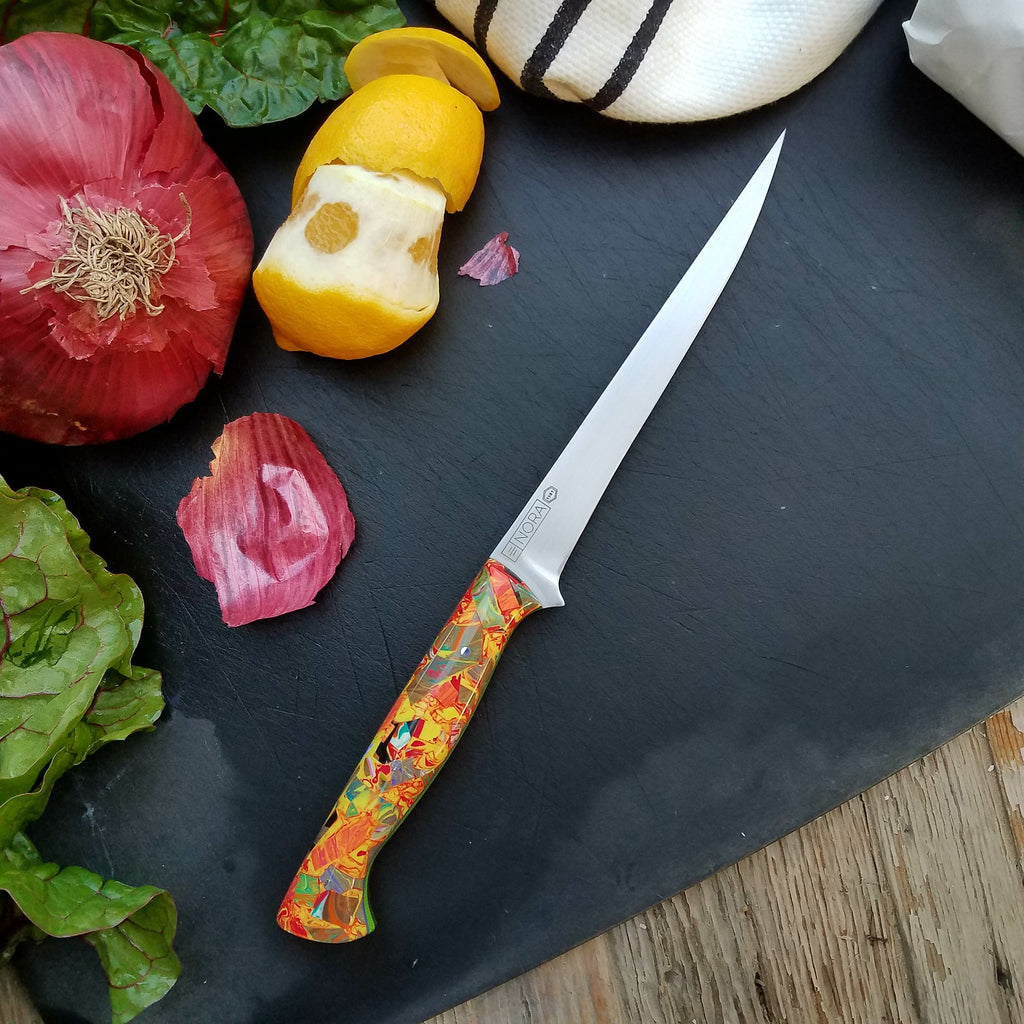

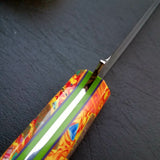
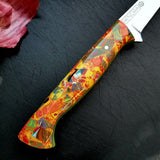
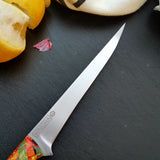

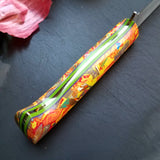
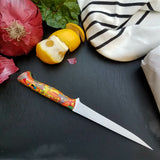
NORA Boning Knife #1161 - Funfetti Cake
$ 295.00 $ 0.00
{ Knife Details }
Metal: AEB-L
Blade Length: 7 inches
Total Length: 12 inches
Handle Material(s): Various Acrylic Based Resins, Purple & Lime Green G10 liners, Stainless Steel Pins
Rockwell Hardness: 62
Grind Type: Flat
USES & DESCRIPTION
As the name implies, boning knives are specifically made for butchering. This is our 7 inch boning knife which has a nice thin profile and a rigid blade. The thin blade is agile and highly maneuverable, making easy work of separating meat from the bones. We also gave this boning a very light amount of flex at the tip of the blade to allow you to more easily wrap around the joints of whatever protein you may be breaking down.
Each of our knives is handmade and numbered. This boning knife, number #1161, is a fun mix of various acrylic based resins lined with purple and green G10 which accent the numerous colors in this knife. If you were looking for a unique knife, this is it. As an added bonus acrylic resins are also very durable and this knife should have a long lifespan in the kitchen while also looking great. It requires very little maintenance as far as handle materials go.
This knife blade is composed of AEB-L stainless steel which is a high-quality Swedish metal, originally developed for razor blades. Recently, steel suppliers have made this steel available in thicker sheets and it has proven to be an excellent adaptation for the cutlery industry.
AEB-L has a beautiful balance of carbon and chromium and, with proper heat treatment, this steel produces both a very fine edge as well as excellent toughness and edge stability. The fine grain structure also makes this steel very easy to sharpen. We believe it is one of the finest stainless steels available on the market today for use with kitchen knives.
As a side note, there are two things we like to mention about this steel:
1.) This steel responds beautifully to honing and if the knife is honed regularly it should need infrequent sharpening.
2.) AEB-L is a stainless steel but just barely. The higher carbon content in this stainless is what allows it to get a fine edge and higher hardness than other stainless steels but it also has a tendency to sometimes form very fine rust spots on the blade. If this happens, these are easily removed with a green scotch brite pad and usually the rough end of a kitchen sponge will also do the trick.
